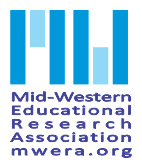Abstract
Preservice teachers are placed in educational environments to learn about teaching literacy and about literacy’s role in the English Language Arts (ELA) classroom. Of particular significance is how preservice teachers perceive and understand the varied components of language arts (i.e., reading, writing, speaking, listening, viewing, and visually representing) while observing mentor teachers. The purpose of this research was to discover which language arts preservice teachers choose to observe during their field placements, and how that might impact the teaching of critical literacy. First, the authors situate the study in our understanding of the language arts and frame it within critical literacy. Next, a description of the methods used to collect and analyze the data, including the role of constructivism and observation, is provided. The authors then describe the findings regarding what language arts were privileged and what language arts were absent in preservice teachers’ observations of classrooms. A final reflection focuses on the definitions of “language arts” and on how best to help preservice teachers recognize all of them, so they are better able to ultimately implement a comprehensive language arts program that includes the tenets of critical literacy in their classroom.
Recommended Citation
Bender-Slack, Delane and Young, Teresa
(2016)
"Preservice Teachers’ Understanding of the Language Arts: Using a Lens of Critical Literacy,"
Mid-Western Educational Researcher: Vol. 28:
Iss.
2, Article 2.
Available at:
https://scholarworks.bgsu.edu/mwer/vol28/iss2/2


